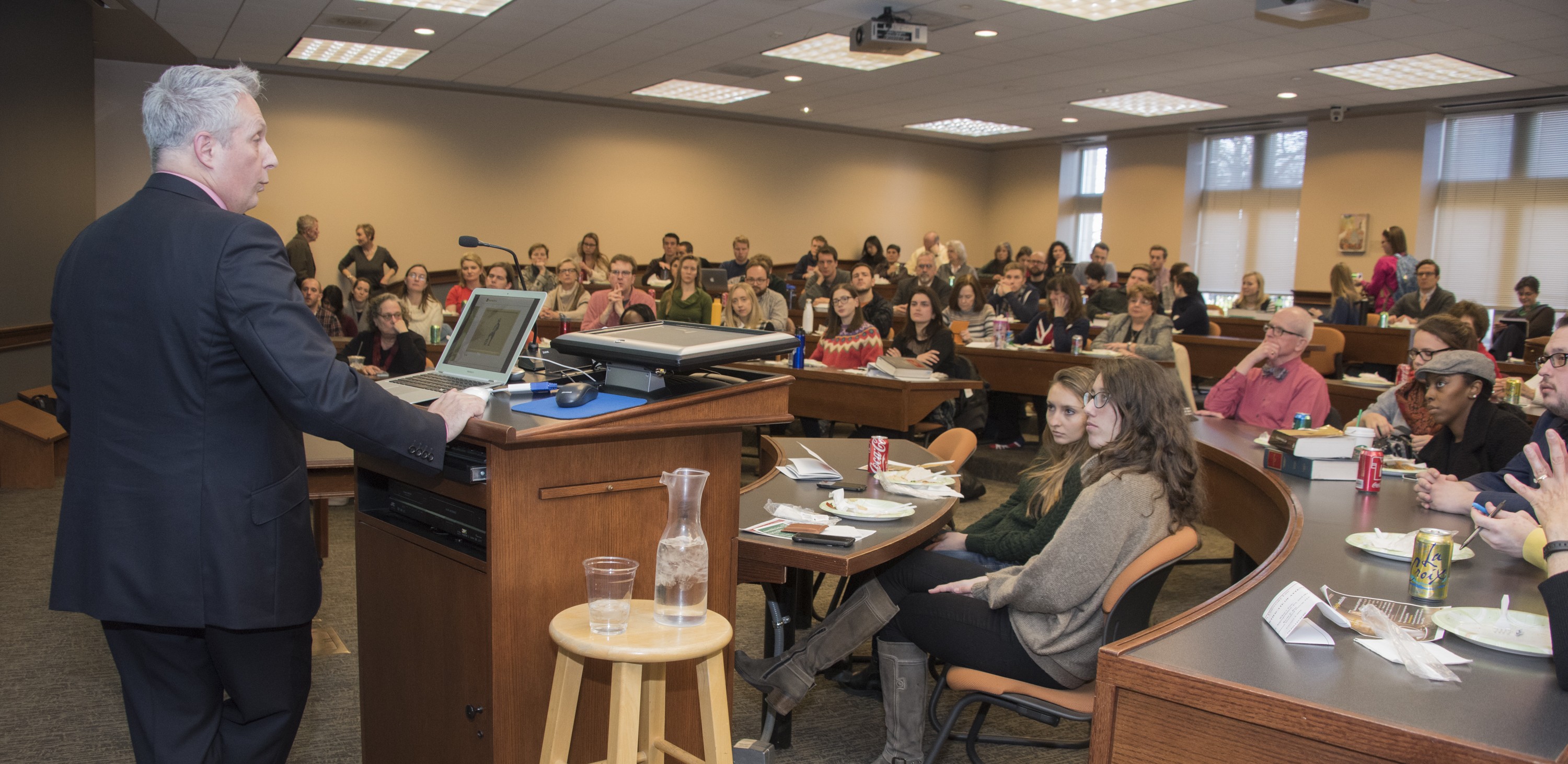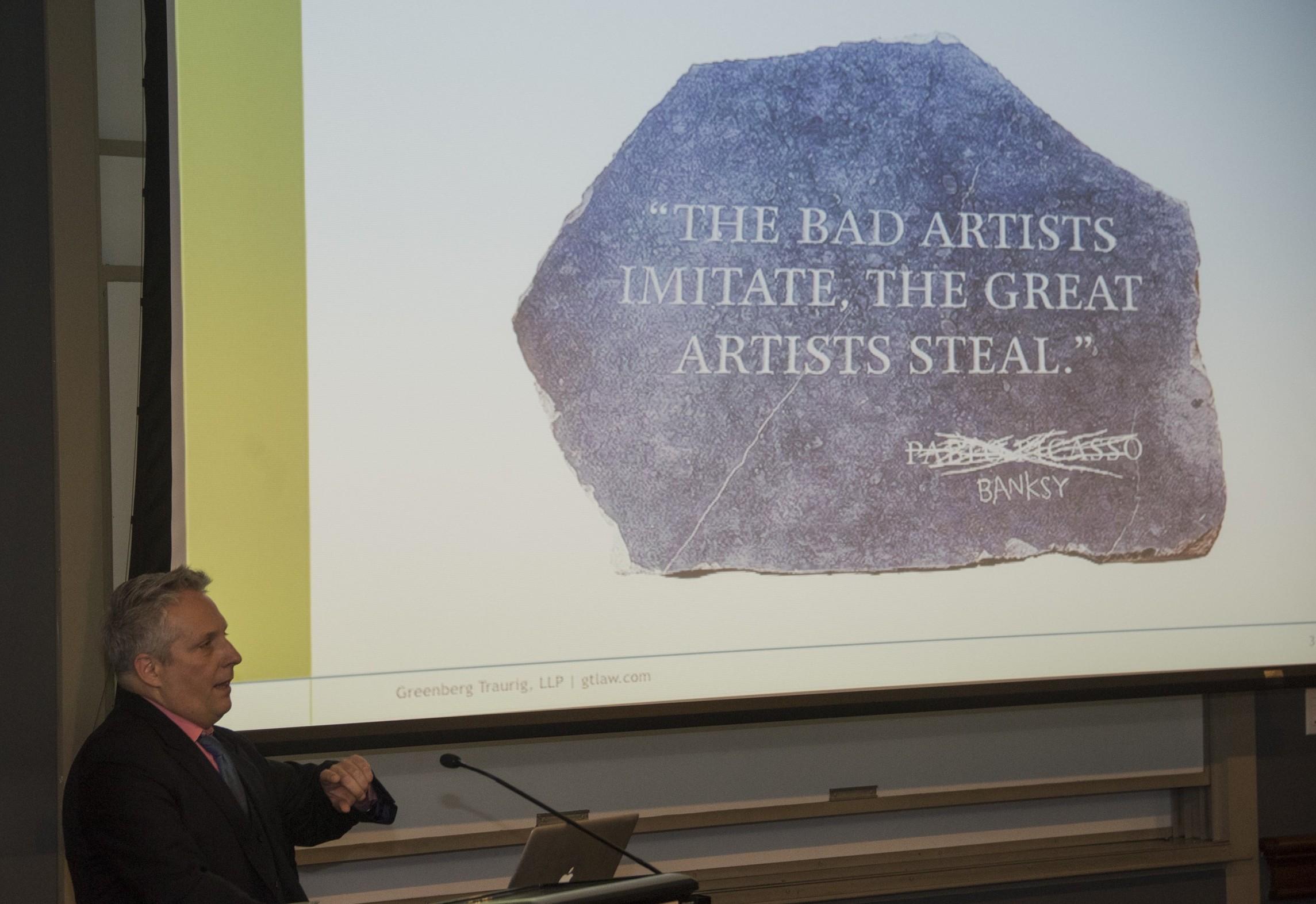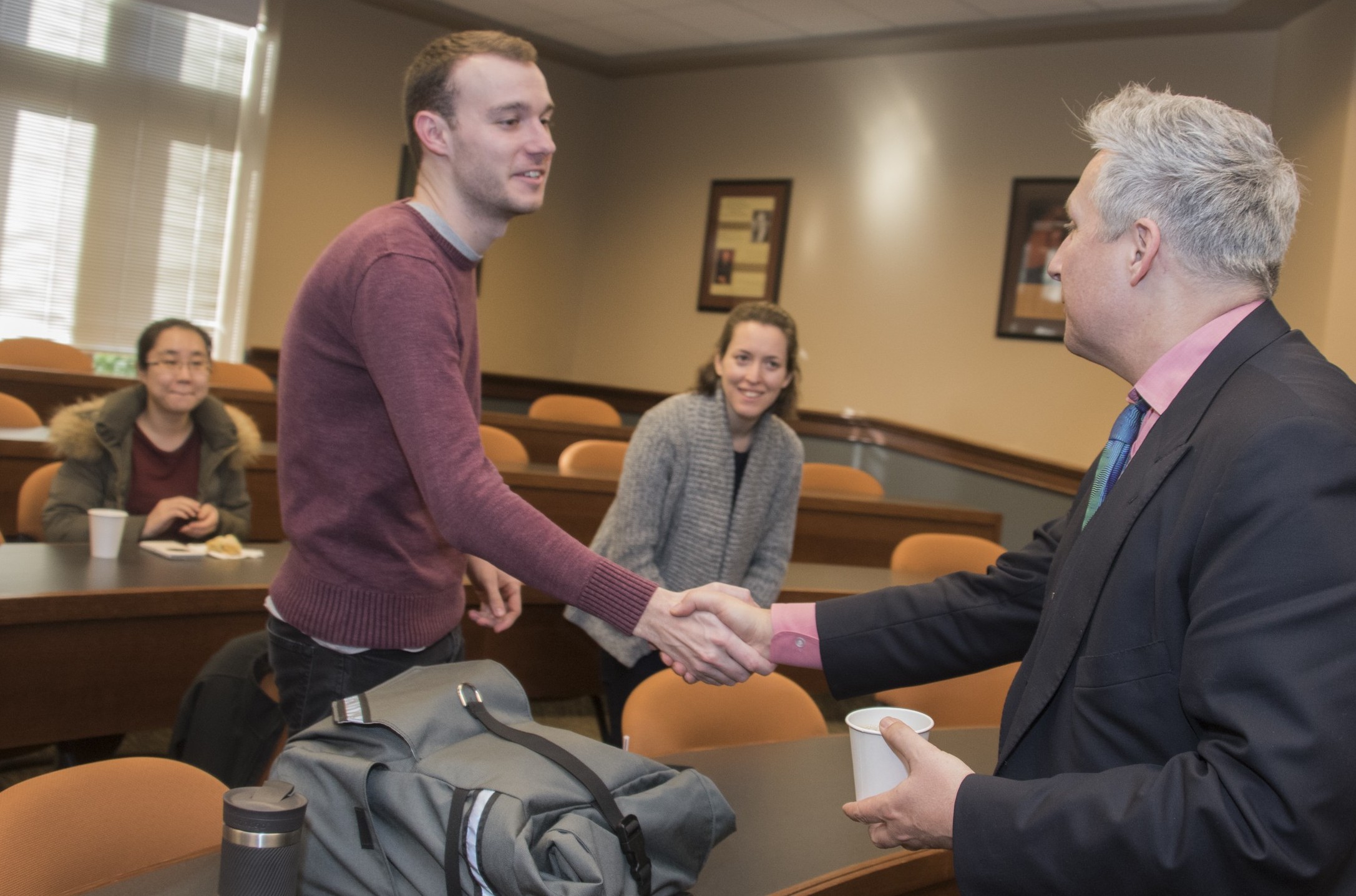By: Tamara L. Slater
Earlier this month, alumnus Kevin Ray (PhD ’98, JD ’01), Of Counsel at Greenberg Traurig, LLP in Chicago, gave a public lecture entitled “What’s Fair: Street Art, Appropriation Art, and the Law” to an overflowing classroom in the law school. His talk reflected the interdisciplinary nature of the co-sponsors, which included the Whitney R. Harris World Law Institute, Assembly Speaker Series, Intellectual Property Law Society, International Law Society, and Public Interest Law & Policy Speaker Series.

 During the talk, Ray went through a brief history of art appropriation in the Western world starting with ancient Greece and Rome where appropriation was not considered a problem because the artists’ original work was more of a “platonic form” that other artists might seek to replicate. He then moved on to the Renaissance, where artists began to claim more control and ownership over their work, and finally ended in the modern day. Examples of modern appropriated work range from Andy Warhol’s Campell’s Soup Cans to street artist Banksy “riffing” on Picasso to Richard Prince selling exact duplicates of The Catcher in the Rye on the sidewalks on New York City, save the author’s name and biography.
During the talk, Ray went through a brief history of art appropriation in the Western world starting with ancient Greece and Rome where appropriation was not considered a problem because the artists’ original work was more of a “platonic form” that other artists might seek to replicate. He then moved on to the Renaissance, where artists began to claim more control and ownership over their work, and finally ended in the modern day. Examples of modern appropriated work range from Andy Warhol’s Campell’s Soup Cans to street artist Banksy “riffing” on Picasso to Richard Prince selling exact duplicates of The Catcher in the Rye on the sidewalks on New York City, save the author’s name and biography.
 One example of a truly modern question of appropriation is the ongoing lawsuit against Prince for creating an art gallery exhibit in 2014 called New Portraits showing (and more recently selling for huge sums of money) photos from other people’s Instagram accounts. For Prince’s gallery opening, he added text to the photos and therefore claimed the art to be “transformative” and thus “fair use” under copyright law.
One example of a truly modern question of appropriation is the ongoing lawsuit against Prince for creating an art gallery exhibit in 2014 called New Portraits showing (and more recently selling for huge sums of money) photos from other people’s Instagram accounts. For Prince’s gallery opening, he added text to the photos and therefore claimed the art to be “transformative” and thus “fair use” under copyright law.
Art law is a wonderful example of how discrete areas of law inform, and are informed by, culture more broadly. In this case, as conceptions of appropriation and ownership of one’s own art has shifted, the type of legal cases brought has changed, inevitably impacting both the art and art law we see today.
